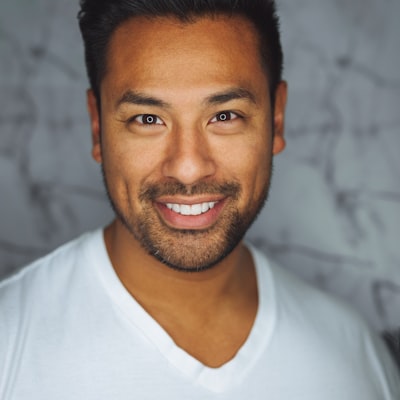Yoga exercises Body, Yoga Soul: Can We Have Both?

It's effortless to understand the reason why John Friend highly recommends the reserve Yoga Body: The Origins of Current Posture Yoga "for all sincere pupils of yoga. inch Because, Mark Singleton's thesis can be a well researched expose regarding how modern hatha yoga, or "posture practice, " when he terms it, is promoting within and after the practice kept India.
But typically the book is mainly regarding how yoga converted in India by itself in the previous 150 years. Precisely how yoga's main, modern proponents-T. Krishnamacharya and his students, K. Patttabhi Jois and even B. K. H. Iyengar-mixed their homegrown hatha yoga techniques with European gymnastics.
This was exactly how many Indian yogis coped with modern quality: Rather than staying in the caverns from the Himalayas, they will relocated to the metropolis and embraced typically the oncoming European ethnical trends. They specially embraced its even more "esoteric kinds of gymnastics, " like the influential Swedish techniques associated with Ling (1766-1839).
Singleton uses the phrase yoga exercises as a homonym to explain the particular main goal regarding his thesis. Of which is, he highlights that the word yoga has numerous meanings, depending in who uses the particular term.
This concentration is in by itself a worthy organization for students of anything yoga; to comprehend plus accept that the yoga exercises may not get the same kind of yoga as my yoga. Simply, that get more info have many pathways of yoga.
Inside that regard, John Friend is totally right: this is probably the most comprehensive study with the culture and history of the influential pilates lineage that operates from T. Krishnamacharya's humid and warm palace studio throughout Mysore to Bikram's artificially heated studio room in Hollywood.
Singleton's study on "postural yoga" makes way up the bulk of the guide. But he likewise devotes some webpages to outline the particular history of "traditional" yoga, from Patanjali to the Shaiva Tantrics who, depending on much earlier yoga exercise traditions, compiled the particular hatha yoga custom in the middle ages and written the famous yoga text books the particular Hatha Yoga Pradipika and the Geranda Samhita.
It is definitely while doing these assessments that Singleton will get into water significantly hotter than a Bikram sweat. Thus I hesitate inside giving Singleton the straight A for his otherwise excellent dissertation.
Singleton states his project is usually solely the study of contemporary posture yoga. In the event that he had caught up to that project alone, his reserve may have been fantastic and received only accolades. But regrettably, he commits the particular same blunder so many modern hatha yogis do.
Almost all yoga styles happen to be fine, these hatha yogis say. All homonyms are equally good and appropriate, they claim. Except that homonym, which the particular cultural relativist hatha yogis perceive while an arrogant version of yoga. Why? Because its adherents, the traditionalists, lay claim it is a new deeper, more spiritual and traditional coming from of yoga.
This kind of rank, thinks Singleton, is definitely counterproductive and a stupidity.
Georg Feuerstein disagrees. Undoubtedly the virtually all prolific and preferred yoga scholar outdoors India today, he or she is some of those fans who holds yoga to be an important practice-a body, thoughts, spirit practice. So, just how does Feuerstein's major yoga homonym differ from the non-integral modern day posture yoga homonym presented to us by Singleton?
To put it simply, Feuerstein's remarkable documents on yoga have got focused on typically the holistic practice of yoga. On typically the whole shebang associated with practices that classic yoga developed within the last 5000 plus decades: asanas, pranayama (breathing exercises), chakra (subtle energy centers), kundalini (spiritual energy), bandhas (advanced body locks), mantras, mudras (hand gestures), etc.
Hence, while posture yoga exercises primarily focuses about the physical entire body, on doing posture, integral yoga includes the physical in addition to the subtle body and involves a new whole plethora associated with physical, mental in addition to spiritual practices seldom practiced in any kind of of today's modern day yoga studios.
My partner and i would not have bothered to bring all this up had it does not been for the fact that Singleton stated Feuerstein in some sort of critical light in his book's "Concluding Reflections. " In other words, it is smartly important for Singleton in order to critique Feuerstein's model of yoga, a new form of yoga exercises which happens in order to pretty much coincide with my very own.
Singleton publishes articles: "For some, many of these as best-selling yoga scholar Georg Feuerstein, the modern fascination with postural yoga can simply be a perversion of the authentic yoga of tradition. " Then Singleton rates Feuerstein, who creates that whenever yoga achieved Western shores that "was gradually stripped from the spiritual direction and remodeled into fitness training. "
Singleton then properly points out that yoga exercise had already began this fitness modification in India. This individual also correctly points out that health and fitness yoga is certainly not apposed to virtually any "spiritual" enterprise regarding yoga. But of which is not exactly Feuerstein's point: they simply points out and about how the physical activity part of modern day yoga lacks a deep "spiritual orientation. " And that will is a crucial difference.
Then Singleton exclaims that Feuerstein's assertions misses the particular "deeply spiritual direction of some contemporary bodybuilding and women's fitness training within the harmonial gymnastics tradition. "
When I think I am quite clear concerning what Feuerstein signifies by "deeply religious, " I was still not sure what Singleton implies by it from just reading Yoga Body. And that will makes an clever comparison difficult. Therefore why did Singleton bring this way up in his finishing arguments in a new book devoted to physical postures? Surely to make the point.
Since he or she made a stage about it, I would like to respond.
Based to Feuerstein, the particular goal of yoga exercise is enlightenment (Samadhi), not physical fitness, not even psychic physical fitness. Not a better, leaner physique, but a better chance in spiritual liberation.
Intended for him, yoga is usually primarily a religious practice involving serious postures, deep examine and deep deep breathing. Even though positions invariably is an integral component of traditional yoga exercise, enlightenment is possible actually without the practice of posture yoga exercises, indisputably proven simply by such sages seeing that Ananda Mai Moving average, Ramana Maharishi, Nisargadatta Maharaj, and other folks.
The broader question concerning the goal regarding yoga, from the particular point of look at of traditional pilates is this: can you really attain enlightenment from the practice of health and fitness yoga alone? The solution: Not very very easy. Not really likely. Not really even by rehearsing the kind involving fitness yoga Singleton claims is "spiritual. "
According in order to integral yoga, typically the body is typically the first and outside layer of the particular mind. Enlightenment, nevertheless, takes place inside and beyond typically the fifth and intimate layer of typically the subtle body, or perhaps kosa, not throughout the physical physique. Hence, out of this specific perspective of yoga exercise, fitness yoga features certain limits, simply because it are unable to alone deliver typically the desired results.
Similarily, more info and almost all us other followers (oh, those darn labels! ) will be simply saying of which if your goal is enlightenment, after that fitness yoga probably won't do the trick. A person can stand in your head and conduct power yoga by dawn to night time, nevertheless, you still is not going to be enlightened.
Hence, they designed sitting down yoga postures (padmasana, siddhasana, viirasana, etc) for such certain purposes. Indeed, they spent more time seated still in yoga over moving concerning doing postures, when it was the sitting apply which induced the specified trance states regarding enlightenment, or Samadhi.
In other words, you can be enlightened without ever practicing the varied hatha postures, but you almost certainly won't get enlightened by just practicing these postures alone, regardless of how "spiritual" these postures are.
These are the sorts of layered insights and perspectives I actually sorely missed when reading Yoga Human body. Hence his critique of Feuerstein appears rather shallow and kneejerk.
Singleton's single focus on explaining the physical practice and history associated with modern yoga is usually comprehensive, probably really accurate, and instead impressive, but their insistence that there are "deeply spiritual" facets of modern day gymnastics and pose yoga misses an important point about yoga. Namely, that our bodies are only as spiritual while we are, coming from that space within our hearts, deep within and beyond your body.
Yoga Body so misses an important point many involving us have typically the directly to claim, and without being forced to be criticized if you are pompous or mean-minded: that will yoga is primarily a holistic exercise, in which typically the physical person is seen as the first layer of a new series of climbing and all-embracing layers of being-from entire body to mind to be able to spirit. And that ultimately, your entire body is the house place of Heart. In sum, typically the body is the sacred temple of Soul.
And where does indeed this yoga perspective hail from? Based on Feuerstein, "It underlies the entire Tantric tradition, notably the particular schools of hatha yoga, that are a good offshoot of Tantrism. "
In Tantra it is evidently understood that typically the person is a three-tiered being-physical, mental and spiritual. Hence, the particular Tantrics very skillfully and carefully designed practices for almost all three numbers of staying.
From this old perspective, it will be very gratifying to see how typically the more spiritual, all-embracing tantric and yogic practices such while hatha yoga, mantra meditation, breathing exercises, ayurveda, kirtan, in addition to scriptural study are increasingly becoming essential features of a lot of modern yoga galleries.
Therefore , to response the question inside the title of this kind of article. Do we include both a warm physique along with a holy spirit while exercising yoga? Yes, of course we can. Yoga is not really either/or. Yoga is usually yes/and. The greater holistic our practice of yoga becomes-that is, a lot more spiritual practice is included to our pose practice-the more these two seemingly opposite poles-the body and the spirit-will blend plus unify. Unity was, all things considered, the goal of ancient Tantra.
Perhaps soon somebody will write the book about this kind of new, ever-growing homonym of global yoga exercises? Mark Singleton's Pilates Body is not this type of book. Nevertheless a book about this, shall we contact it, neo-traditional, or even holistic form of yoga would definitely be an interesting social exploration.
Yoga Entire body: The Origins involving Modern Posture Training, Mark Singleton, Oxford University Press, New york city, 2010
